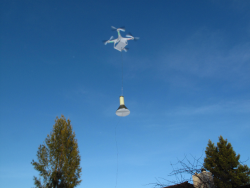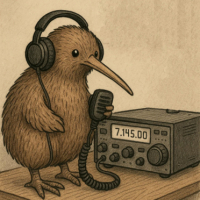n6gn
About
- Username
- n6gn
- Joined
- Visits
- 5,482
- Last Active
- Roles
- Member
- Points
- 31
-
QiwiQ a KiwiSDR client for Android: looking for feedback, testers and comments
You ask a very pertinent question. I think the users and uses of a spectrum or WF display are varied so there isn't a single best answer. My own uses usually tend toward using it is a measuring device. But that can be in the process of improving ham station performance and also while operating the station to understand conditions and adjustments while making a contact. So my opinion is that both use models are important, though perhaps my main one is in the minority.
I understand the limits the phone environment puts on you and of course you're the best one to make trade-offs that stress these. However, I think what you already have running is very close to enough. Whether you run both WF and spectrum at the same time to me isn't critical. I'd be happy to select between the two based on my particular use case. The few simple changes to display of the data you are already presenting could, I think, make what you have even better for both measurers and operators alike. I don't think there's much additional cpu demand from the few changes I'd like to see, they are mainly static display characteristics of what you already have. I think they would make better use of the valuable display real estate available.
In the end only you know who and what your target audience is and what you'd like to do. I think the rest of us can only provide input suggestions, bug reports and thanks for your significant contribution to the utility of our Kiwis.
Best,
Glenn n6gn
-
QiwiQ a KiwiSDR client for Android: looking for feedback, testers and comments
I agree with @ZL2P that static buttons, while convenient, take away valuable screen real estate that is better spent on dynamic data such as spectrum and WF. I'd like to see grid lines for both axes, 10 dB/div for Y axis in spectrum and 5-10 in X axis at the zoom level.
I think the use of COL for spectrum is incorrect. IMO, COL can best be selected in WF by user to provide preferred contrast and characteristics, especially at low levels near the noise, but the corresponding amplitude information in spectrum mode should not be color as it presently is. Rather it should be vertical position - a spectrogram as on a spectrum analyzer. There is far more information conveyed with this sort of representation than with color.
WF is useful for gathering a temporal record, where that is important, but spectrum is a frequency record. Absolute and relative signal levels, noise and signal signatures are far better communicated in this mode with a Y axis that is amplitude. The WF color map can be used in spectrum as well, though even monochrome on a spectrum display can convey the same wealth of information.
I'd rather see the button space reduced, perhaps through drop-down menus, and the reclaimed display space used for spectrum and WF.
Thanks for making this nice app.
-
QiwiQ a KiwiSDR client for Android: looking for feedback, testers and comments
Another question: has anyone ever found an FM signal on the shortwave bands?
What is most common on shortwave: NBFM or NNFM?
You've no doubt had this question answered by now but, yes, there is significant NBFM activity between 29.5-29.7 MHz. I'm not certain it is well-controlled but it seems pretty comparable to the 'normal' (also varies!) 5 kHz peak deviation I hear on VHF.
-
QiwiQ a KiwiSDR client for Android: looking for feedback, testers and comments
IMO the logic is indeed broken. While other systems may have a 'default' CW offset of 500 or sometimes 600 Hz to create a "pleasing" tone, this may be most often with LSB tuning rather than right-side-up USB tuning. I'm not a heavy CW operator but it has always bothered me. I like to know where I've tuned my receiver and create a mental picture of what I'm hearing based on the mode I've selected. Thus I choose your solution when given a chance. But I am probably in the minority in many other ways, e.g. users seem to prefer WF over Spectrum views, temporal rather than frequency. While there are some cases that WF gives more useful information I think it doesn't remotely compare with a calibrated Y axis. Color simply doesn't provide the same information as a spectral display for me. Caveat emptor, I guess.
On an unrelated note, I did send you a pittance for a cup of coffee but haven't seen a registration key show up anywhere, I'm not even sure one is necessary. Is it?
Glenn n6gn
Fort Collins, CO
-
GPS input
Here's an 8-way one for around US$30 if you order two.



